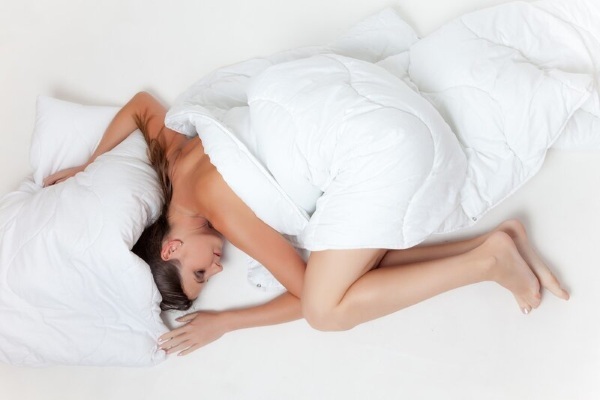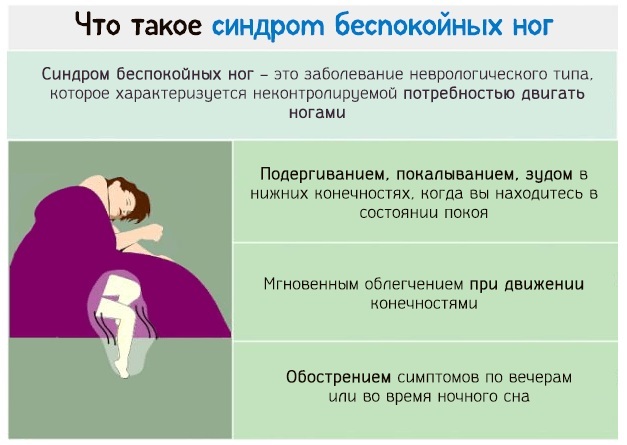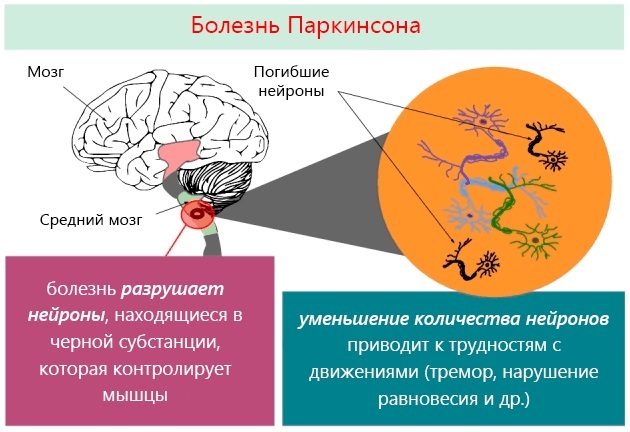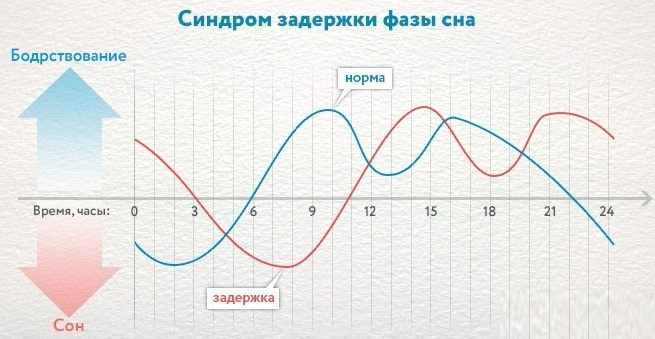Any flinching when falling asleep is called a hypnagogic push. This is a real movement that a person experiences and feels. The reason for this action is the body's reaction to drowsiness. When a person is tired and overworked, he falls asleep faster.
Accordingly, the pace and rhythm of the heartbeat slows down, and on the subconscious mind the brain feels the same symptoms as in death. To protect themselves, neurons send impulses, awakening a person, thereby checking if he is still alive. In adults and children, there are similar situations, and such features of the body can be considered the norm.
Record content:
- 1 Features of manifestation
- 2 Is twitching in a dream dangerous
- 3 Classification of spasms and twitching
-
4 Main reasons
- 4.1 Diseases
- 4.2 Neurophysiological
- 4.3 Physical exercise
- 4.4 Stress
- 4.5 Blood supply disorders
- 4.6 Sleep phase change
- 4.7 Pathological factors
- 5 Should I see a doctor
- 6 Treatment
- 7 Video about the causes of twitching in a dream
Features of manifestation
Some people move their arms and legs when they experience a hypnotic push. Others may twitch slightly. In some cases, the hypnagogic jerk is accompanied by a cry if the body reacts to the violent nature of the chronic hypnagogic jerk.
There are many theories regarding the causes of the hypnotic shock:
- anxiety;
- excessive consumption of coffee;
- stressful situations;
- physical activity before bedtime.
Another possible reason for the feeling of falling that accompanies hypnotic tremors is a misunderstanding of what is happening in the brain. When the muscles relax, the brain may misinterpret the relaxation as the fact that the body is actually falling. Therefore, the brain panics and sends signals to the muscles. The person awakens after this.
Another really interesting theory is that this involuntary stimulation is actually the result of evolution. Since humans are descended from primates, the hypnagogic "jerk" once served as an opportunity for an animal to stay awake in a tree. Dangerous predators in such cases could not take the opportunity to attack a fast sleeping prey.
Is twitching in a dream dangerous
Any movement in sleep or in a borderline state is considered the norm. This is a common brain response to stimulants that keep the body and brain awake for only a limited period of time. The person falls asleep and his body begins to relax. The brain also benefits from adequate sleep.
However, if sleep phases change too quickly, the brain begins to process them 120 times faster, from which the body falls into deep sleep. At such moments, you can actually feel fear while dreaming.
This fear prompts the brain to check if the person is alive and if all organs are working properly. The twitching is usually involuntary. That is, this is not an external reaction of a person to a dream he sees, where he, for example, fights or runs.
A hypnagogic or hypnotic jerk may indicate the presence of diseases. A fragmented sleep pattern in phases 2 and 3 can cause a person to wake up and feel refreshed, as if they had been asleep for 8 hours.
Classification of spasms and twitching
Flinching when falling asleep (in adults, the reasons for such reactions may indicate the presence of pathologies) refers to the manifestation of physiological and neurotic features of the body:
- The onset of the REM phase (rapid eye movement) - this is the moment when the eyeballs begin to move more intensively due to increased activity in a group of nerve cells in the brain stem. In this case, a person can have time to see a dream.
-
Restless legs syndrome - during sleep, the muscles relax, but due to excessive stress, the brain forces them to continue to strain. In this regard, uncontrolled movements occur, which are similar to sharp jolts.

- The movement of legs and arms in a dream - similar phenomena occur during deep sleep. The sleeping person does not know about this, he can be informed by relatives who feel or observe such cases. This may be due to increased brain activity. This often happens during rest periods. For example, a person tries not to move his fingers, and at some point the phalanges twitch voluntarily.
- Seizures and spasms - Severe pain can occur due to excessive exertion. In a dream, this is due to the fact that the body is at rest, although several hours ago it was actively moving, and the muscles tensed and relaxed. Generalized seizures, like tonic-clonic seizures, can occur in the oral cavity. The embarrassment associated with urinary incontinence also indicates the onset of such attacks.
- Shiver may occur due to the temperature difference in the room in which the person sleeps. If it gets too cold in the morning, the brain thinks that the body temperature is dropping during sleep. The same decline occurs when signs of life disappear. Often the sleeper wakes up.
- Fasciculation - This is a disease when a muscle group periodically twitches. Tremors can occur in the area of the muscle and joint.
Often these twitches can occur when a person is experiencing symptoms of other diseases. They can be associated with physiology or pathology.
Main reasons
The precursor to the development of the disease is inflammation, which can be caused by a lack of dopamine. It is a chemical that is responsible for the connection between the body and the brain. Pathology can cause various "symptoms" of diseases.
Diseases
Dopamine-producing nerve cells can trigger RBD (sleep movement) disorder. The main "signal" is the involuntary movement of the limbs. According to the results of research conducted by scientists, it was found that dementia or progressive Parkinson's disease begins with similar symptoms:
- Parkinson's disease occurs when a group of nerve cells in the brain that produce dopamine stop working.

- These studies show for the first time that inflammation in the brain in RBD patients puts them at risk of developing Parkinson's disease.
- RBD usually affects people between the ages of 50 and 70, and more often in men than women.
According to statistics, every 20 person under the age of 40 is faced with the feeling of the first signs of the disease.
Neurophysiological
Flinching when falling asleep in adults, the causes of which may indicate the presence of a disease, also indicate the onset of consequences as a result of a neurophysiological disorder.
When a person falls asleep, the body slowly relaxes and becomes less sensitive to physical signals from the brain. During sleep paralysis, the body begins to undergo a process of relaxation, but the mind remains awake, feeling the loss of control over consciousness.
Sleep paralysis can also occur during waking:
- In this case, the mind regains consciousness before the end of the REM sleep cycle.
- During REM sleep, the body is relaxed and the muscles are "turned off" so that the body does not physically plunge into vivid dreams.
- Waking up before the last stage of REM sleep is over can lead to hyperventilation and hallucinations, as well as inability to move the body. Fortunately, sleep paralysis is a temporary effect and usually only lasts a few seconds.
Paralysis is most common in people with narcolepsy, but it happens in a different group of people as well. It manifests itself in both men and women. Adolescents and young able-bodied citizens are at greater risk.
It is a genetic disorder and is most commonly seen in people with mental health problems such as anxiety, depression, post-traumatic stress disorder, or panic disorder. Lack of sleep or a change in schedule can also cause paralysis.
Neurologists explain that when a person's mind goes into the stage of "slow sleep", he experiences a separation between the brain and muscles, so he cannot move.
Physical exercise
The most common form of chronic tremor during sleep, which affects 1 in 25 people, is related to exercise.
Essential tremors can occur against the background of overwork:
- frequent flights;

- change of time zones;
- irregular work schedule;
- temporary difficult situation in life;
- transitional age or period associated with the physiological functions of the body.
Due to such loads, where not only muscles are involved, but also the mind, tremors can occur during sleep. More often, such phenomena are found among athletes who are preparing for competitions.
Due to "wear and tear" and the consumption of "fuel" in the nerve endings, the cells cease to supply oxygen to the tissues. When fasting occurs, the muscle contracts, accelerating the blood to obtain more substance.
Stress
A startle when falling asleep can be triggered by banal fatigue or overexcitation. In adults, reactions to external stimuli can manifest themselves in sleep, which are often accompanied by twitching of the limbs, spasms and pain.
The reasons for concern can be:
- experiences that a person faced during the day;
- obsessions;
- thoughts about unsolved problems;
- plans, for the implementation of which you need to complete unbearable tasks.
All this gives rise to a disorder of the nervous system. As a result, the biological clock is disrupted.
All life on Earth developed in a 24-hour cycle of day and night (light-dark). Organisms have developed mechanisms to time their cellular and metabolic processes in order to anticipate the daily rhythm. As a result, almost all cells of the human body have a biological clock based on the cycle of DNA and protein synthesis.
The activity of the clock gene was found in leukocytes and cells of the heart, brain, and liver. Individual clocks run on a cycle close to 24 hours. It is called the circadian rhythm.

The main biological clock is located in the so-called suprachiasmatic nucleus (SCN) in the part of the brain called the hypothalamus. It regulates many of the basic functions of the body. The SCN consists of 20,000 closely interconnected cells, whose rhythms are coordinated so that the frequency of cell responses changes together. with a 24 hour rhythm:
- The two most characteristic beacon rhythms are the body's temperature cycle and the production of the hormone melatonin.
- The SCN regulates body temperature through connections to other areas of the hypothalamus.
- The body temperature changes in waves, reaching a maximum during the day and a minimum (nadir) during the night.
- The SCN also sends a nerve signal along a complex polysynaptic pathway through the cervical spinal ganglia to regulate the pineal gland, which is responsible for melatonin production.
- Melatonin, sometimes called the "hormone of darkness", is produced at night in the dark. It is secreted by the pineal gland into the cerebrospinal fluid and then into the bloodstream to reach the cells of the body. It acts on specific melatonin receptors to directly regulate cell function. It also strengthens the temperature cycle, making it easier for the body to cope with the drop in body temperature. Reducing body temperature helps prepare the brain for sleep.
When everything is working well, the light signals recorded in the eyes keep the SCN working with 24-hour cycle of day and night, and the SCN, in turn, coordinates the clock in the pineal gland and cells along the whole body. All watches maintain a 24-hour cycle in sync with each other.
The circadian alertness signal is then combined with a homeostatic process so that a person can sleep through the night and stay awake throughout the day. But if a person gets nervous, the biological cycle is disrupted, which leads to a circadian disorder.
Blood supply disorders
While you sleep, it's important not only to rest and get enough sleep. A person should choose a comfortable position, clothing and bed so that the muscles do not strain and blood circulation does not stagnate. Some people prefer to sleep in a fetal position with their knees tucked into their stomach. As a result, the blood vessels are pinched, which makes the normal outflow of blood impossible.
The same thing happens with other limbs. Often people wake up terrified that there is no sensitivity in the arm or leg. By pinching the vessels and arteries, a person blocks the access of blood to some organs.
Tissue cells receive less nutrition, which leads to atrophy and oxygen starvation. The brain perceives signals in such a way as if individual organs have lost contact with the control center. Accordingly, in order to check the vital activity, the brain sends signals to the nerve endings, causing the person to flinch.
Sleep phase change
Delayed Sleep Phase Syndrome (DSPS) is a disorder that affects one in 750 adults, resulting in a nocturnal lifestyle. This means that a person's internal clock is set differently. These clocks, called circadian rhythms, are innate and change frequently over the course of a person's life - which is why young children wake up so early and teens prefer to sleep until lunchtime.
In people with DSPS, the internal clock is 2 hours behind. They try their best not to fall asleep in the morning during negotiations, at school, and in the evening they can actively perform mental and physical activity.
The disorder is often confused with insomnia, possibly because people seem lethargic and tired during the day.
But these 2 disorders are actually very different:
| Insomnia | Sleep phase change |
| Problems arise with the very process of falling asleep, often due to anxiety or other factors. | People with the disorder sleep well during the hours they want. |
| External factors practically do not affect the moment of falling asleep. A person may not worry for anything, but sleep will not come. | It's not just a preference to be a "night owl" - people with the disorder cannot fall asleep early, even if they want to. |
When the circadian clock does not coincide with normal sleep and wake times, people complain of insomnia and excessive daytime sleepiness.
Pathological factors
Flinching when falling asleep in adults (causes may indicate the development of an illness or indicate a person's overwork) may occur due to pathological processes chronic in nature.
The main pathophysiology of these disorders is a change in the endogenous circadian timing system. The clinical picture is often influenced by behavioral and environmental factors.
Therefore, any comprehensive approach to the treatment of these disorders must take into account how circadian disorders as well as behavioral or environmental factors that affect sleep time and wakefulness. Temporary exposure to circadian synchronizing agents such as bright light and melatonin, together with proper attention to sleep hygiene, affects the effectiveness of treatment.
Myoclonus is the medical term for a sudden muscle contraction. It can be a sign of an epileptic seizure. This is common in some hereditary diseases such as lipid storage disease. It is also commonly seen in metabolic diseases that cause an increase in urea in the bloodstream.
Should I see a doctor
Long-term (chronic) insomnia is a major cause of depression. Because older people fall asleep more easily and wake up more often, they may feel sleep deprived even if their total waking time has not changed. Sleep deprivation can eventually lead to confusion and other mental changes. Sleep problems are also a common symptom of stress.
Flinching when falling asleep in adults (reasons help to choose an effective method of treatment to normalize sleep functions) can be eliminated by taking antidepressants. The use of sleeping pills should be excluded.
However, most health experts do not recommend these types of drugs because they accumulate in the body and are not excreted in waste products. As a result, toxic side effects can be observed.
Treatment
Some medications have side effects that cause abnormal muscle movements, including myoclonus. Alcohol and smoking cessation can also cause these symptoms. Treatment of nocturnal myoclonus begins with identifying the specific cause and eliminating it.
But often no precise symptoms are observed in the clinical picture. In this case, treatment is aimed at a general decrease in muscle activity just before bedtime.
In other cases, the following drugs may be prescribed:
- Pergolide is a drug that has been used successfully for the short-term treatment of restless legs syndrome. It belongs to a group of sleep disorders known as parasomnias, which are characterized by vivid dreams and physical activity. People often experience this syndrome when they are under stress or have other psychological problems. Symptoms are spontaneous, uncontrolled leg movements.

- Secondary causes include iron deficiency anemia and peripheral neuropathy. Therefore, antidepressants and drugs aimed at restoring brain function can be prescribed as treatment.
- Anticonvulsants, such as valproic acid, can help relieve tremors when falling asleep.
- Benzodiazepines (a family of drugs that contain Valium) are sedative sleeping pills that help manage the fear of not falling asleep on time. An analogue is clonazepam, which is prescribed when an epileptic disorder is observed.
Sleep cancellation syndrome in adults can be caused by irregular work schedules, when you need to alternate between day and night shifts. Stressful situations also become a cause for anxiety, which is reflected in the sleeping person. Flinching when falling asleep is observed, as a rule, immediately after falling into REM sleep.
The brain in such cases tests the body for its ability to survive. In medical practice, this is considered the norm and does not require treatment. For prevention, doctors recommend falling asleep before 23 o'clock in the morning, and waking up until 8 o'clock in the morning. The period of calmness from 21-23 o'clock in the morning is of the greatest value for a person.
Video about the causes of twitching in a dream
Why do people flinch when they fall asleep:



